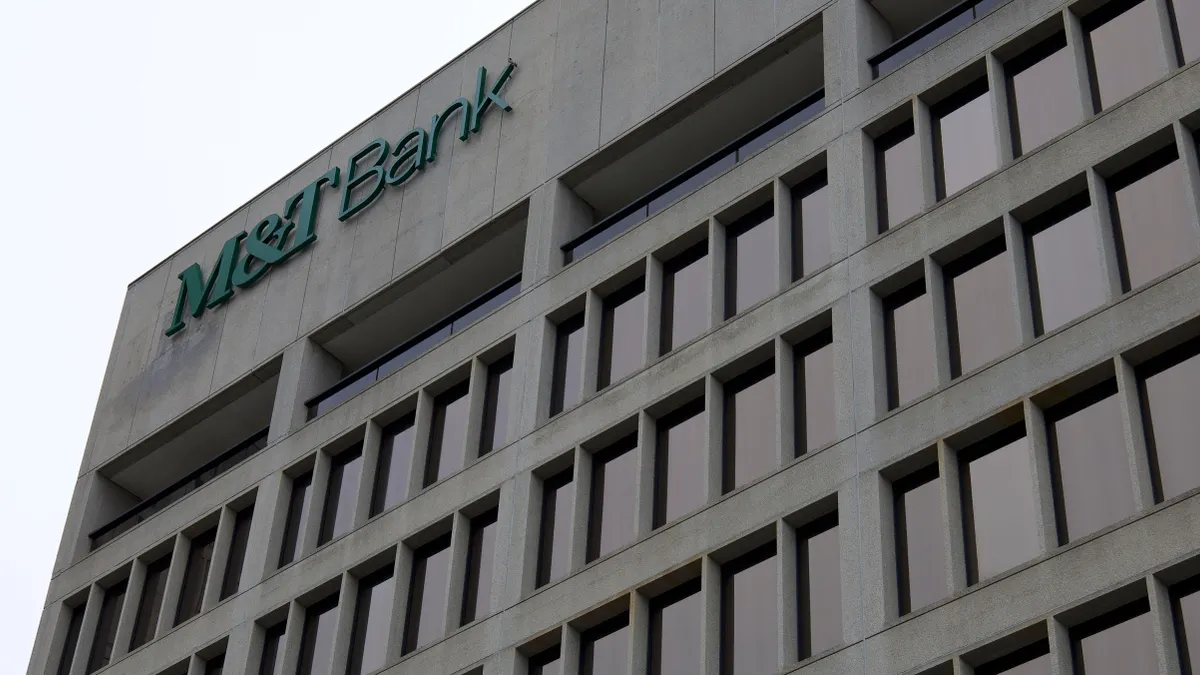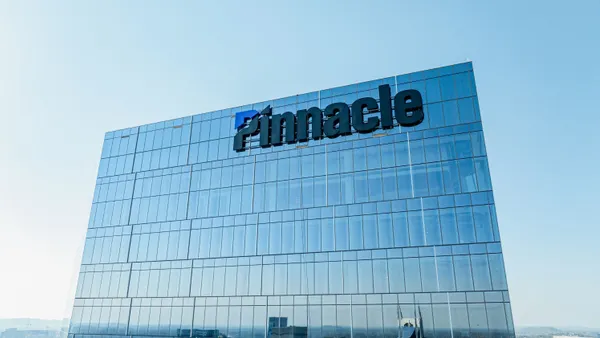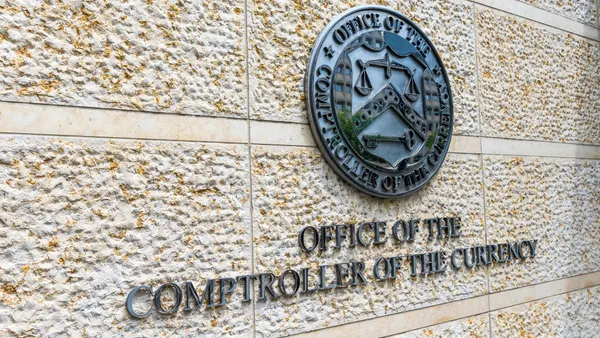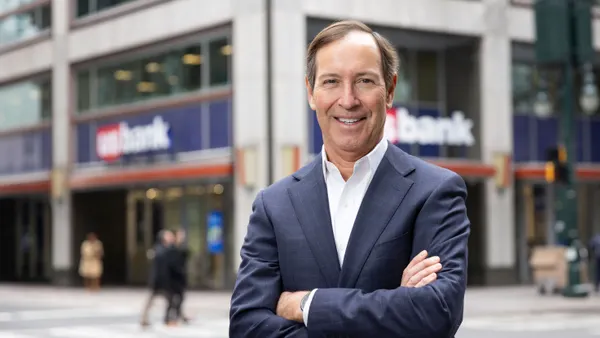Dive Brief:
- The Federal Reserve on Tuesday said it has given its approval for Nashville, Tennessee-based Pinnacle Bank to merge with Columbus, Georgia-based Synovus Bank.
- Since shareholders of each company approved the combination Nov. 6, the merger is expected to be completed Jan. 1, the banks said in a Tuesday news release.
- The merger will create a $116 billion-asset bank adopting the Pinnacle name, with the holding company based in Atlanta and the bank headquartered in Nashville.
Dive Insight:
The all-stock, $8.6 billion regional bank deal was announced in July to tepid investor response. Since then, Pinnacle CEO Terry Turner – who becomes board chair of the combined bank – and Synovus CEO Kevin Blair – who will become president and CEO – have repeatedly stressed that this combination will be different from the last Southeastern merger of equals.
The merger of $61 billion-asset Synovus and $54.8 billion-asset Pinnacle is not “Truist 2.0,” Turner said at an investor conference in September. “This is a starkly different transaction.”
Being decisive and making key decisions early is part of that distinction, executives have emphasized. In August, the two banks laid out the combined company’s management team.
“We didn’t focus too much on the ‘equal’ part of the MOE; we chose the best athlete to make sure that we have the right people in the right seats to move forward, and we did that early on,” Blair said in September.
On Tuesday, the banks said integration teams “are working closely together toward closing with clear plans for how the firm will operate on Day One, while also building the blueprint for integration.”
Throughout 2026, systems, processes and people will be brought together under the Pinnacle brand. Conversions are projected to occur in the first half of 2027, the banks said.
Bankers will have little, if any, role in the administrative work of the combination, to avoid losing traction on their existing responsibilities and winning business, JPMorgan Securities analyst Anthony Elian wrote in a Nov. 13 note. The integration will be taken slow to ensure “potential misfortunes are mitigated” and the right technology solutions are chosen, Elian wrote.
“There’s no shortage of lessons learned to draw from in a merger like ours, and we’ve made decisions and taken actions to avoid pitfalls,” Blair said in Tuesday’s release. “By focusing on the client and team member experiences and keeping local leadership and continuity across our markets, we’re building on Pinnacle’s legacy as one of America’s top-performing banks with engaged and purposeful teams, a loyal and growing client base and outsized shareholder returns.”
Fed order
In its order approving the merger, the Fed noted the two banks have overlapping operations in Alabama, Florida, Georgia, South Carolina and Tennessee. Further, the combined company would control 5.4%, 1.4%, 8.3%, 5.1% and 12.7% of the total amount of deposits of insured depository institutions in those states, respectively.
The Fed board received two adverse comments on the proposed merger. One alleged both Synovus and Pinnacle made fewer home loans to African Americans compared to whites in 2024, and that Pinnacle denied home loan applications made by African Americans at a higher rate than those made by whites.
Another commenter raised similar concerns and asked the Fed to require the combined company to adopt a community benefits agreement as a condition of its approval. The commenter noted both Synovus and Pinnacle have made lower volumes of mortgage loans than their peers, possibly suggesting fair lending concerns, and voiced concerns about both banks’ lending practices related to credit accessibility for microbusinesses.
The latter commenter also alleged weaknesses in both banks’ branch distribution in low- to moderate-income or majority-nonwhite census tracts, and flagged the possibility that the merger could result in branch consolidation exacerbating that.
In response, Pinnacle and Synovus said their mortgage and small-business lending are consistent with or exceed the lending performance of peer banks in the same Community Reinvestment Act assessment areas. Regulators haven’t identified any discriminatory practices at either bank, and both lenders have implemented strategies to address potential gaps in their lending performance, including initiatives to benefit borrowers in LMI areas, the banks said.
The combined bank is “committed to complying with fair lending laws” and “will draw on the best practices of both institutions to enhance [the pro forma bank’s] ability to meet the credit needs of underserved communities,” according to the Fed order.
The banks also pointed to partnerships with community organizations, and 26 letters of support from client and community partners, many of which backed up the banks’ efforts to meet underserved communities’ needs, the Fed said.
Regarding the commenter’s branch concerns, the combined bank will continue to identify areas where additional locations would support community needs, including those of LMI communities, and expects branch closures or relocations “to be small.”
Both banks received satisfactory ratings on their most recent CRA performance evaluations, the Fed said.













